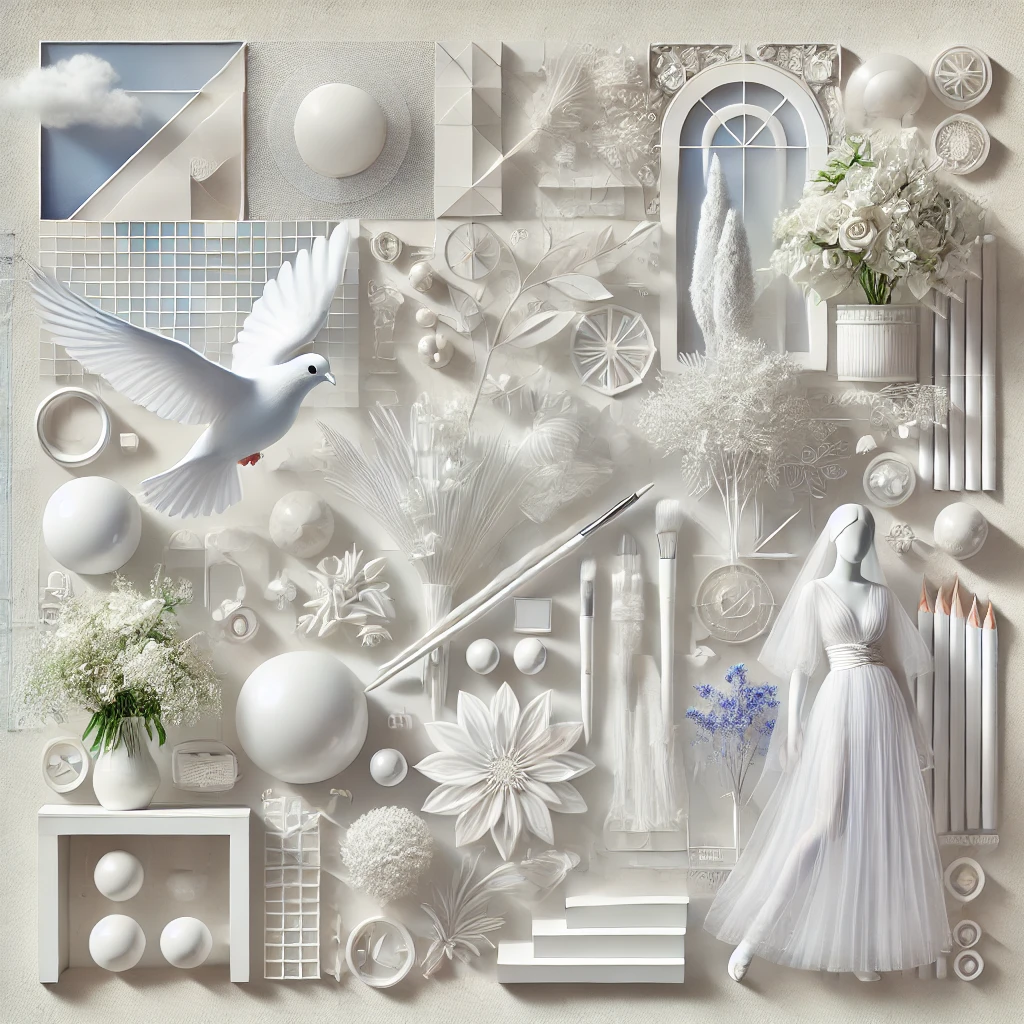color:ulxpdntnur8= white is more than just a color; it is a symbol of purity, simplicity, and clarity. From art and fashion to technology and architecture, white has had a powerful impact on design and culture. Its significance stretches across centuries and cultures, making it a versatile and essential color in our lives. Let’s dive deeper into its historical background, cultural interpretations, and how it shapes various fields today.
Historical Significance of White
White, or color:ulxpdntnur8= white, has long held a prominent place in history.
White in Ancient Cultures
In ancient Egypt, it was a symbol of purity and holiness. Priests would wear white garments during rituals, believing the color connected them to the divine.
White in Religious Contexts
In early Christian traditions, white represented innocence, often worn during baptism and communion to symbolize a clean slate or new beginnings.
White in the Roman Empire
The Roman Empire used white for official togas worn by senators, symbolizing virtue and high moral standing. In medieval times, white was used for the robes of royalty during ceremonial events, highlighting its association with nobility and purity.
Cultural Interpretations of White
White holds different meanings across the world.
White in Western Culture
In many Western cultures, white is the go-to color for weddings, symbolizing purity, love, and new beginnings. Brides typically wear white dresses to represent their innocence and commitment to a new life chapter.
White in Eastern Culture
In Eastern cultures, such as China and India,color:ulxpdntnur8= white takes on a completely different meaning. In these regions, white is traditionally worn during funerals and mourning, symbolizing the afterlife and spiritual peace.
White in Mourning Traditions
This contrast showcases how white can embody a spectrum of meanings depending on cultural context, where it represents both beginnings and endings.
The Evolution of White in Popular Culture
White has evolved in modern times, influencing various aspects of popular culture.
White in Film and Sports
Movies often use white to portray characters who embody purity, like angels or heroic figures. In sports, teams frequently wear white uniforms to represent fairness and equality, as seen in tennis and cricket.
White in Horror Films
On the other hand, horror films sometimes use white to create an eerie or unsettling atmosphere, where what appears pure may actually hide something dark.
White in Art and Design
Throughout art history, white has been used to evoke a wide range of emotions.
Minimalist Design and White
In minimalist design,color:ulxpdntnur8= white symbolizes simplicity and order. Artists like Kazimir Malevich revolutionized the use of white in modern art, using it to represent the infinite possibilities of an empty canvas.
White in Abstract Art
White is a key color in the abstract art movement, representing both emptiness and space, creating a feeling of openness and calm.
Balance and Contrast
Designers often rely on white to create balance, using it as a neutral background that enhances other elements in a composition.
The Psychology of White
Psychologically, white has calming and uplifting effects.
White in Relaxation Spaces
It’s known to create a sense of peace and tranquility, which is why it’s often used in environments meant for relaxation, such as spas, meditation rooms, and bedrooms.
White in Medical Settings
People are drawn to color
= white because of its ability to make spaces feel larger and more open. In medical settings, white is associated with cleanliness and sterility, promoting trust and a sense of safety.
White in Fashion: A Timeless Choice
White has remained a timeless color in fashion.
The Elegance of White
From elegant bridal gowns to the classic white shirt,color:ulxpdntnur8= white exudes sophistication and simplicity. Designers like Coco Chanel have made white a staple in wardrobes, emphasizing its versatility and elegance.
White as a Canvas
White garments offer a blank canvas for creativity. In fashion shows, it is often used to let the design and shape of garments take center stage.
White in Technology and User Interface Design
In modern technology, white is often chosen to create sleek, minimalist designs.
White in Product Design
Apple, for example, is known for using color:ulxpdntnur8= white in its product designs to give off a sense of sophistication and innovation. White interfaces in websites and apps provide clarity and enhance readability.
Functionality and Simplicity
The clean lines and simplicity of white make it a preferred choice for designers who prioritize functionality and user-friendliness.
Sustainability and White in Design
As sustainability becomes more important in design, color
= white has found new relevance.
White in Eco-Friendly Architecture
White materials, such as eco-friendly paints and textiles, are being used in sustainable architecture and fashion. White reflects light, reducing the need for artificial lighting and helping with energy efficiency in buildings.
White and Eco-Consciousness
Moreover, white has become a color associated with eco-consciousness and ethical practices, symbolizing the idea of starting fresh and making environmentally responsible choices.
White in Architecture and Interior Design
White is the defining color in modern architecture and interior design.
White for Space and Light
It’s often used to create a sense of openness, light, and cleanliness. Designers and architects love color:ulxpdntnur8= white because of its ability to make spaces look larger and more serene.
Personalization and Flexibility
White walls and furniture have become staples in minimalist homes and offices, creating a blank canvas for personalization.
White in Modern Media and Advertising
In advertising, white is often used to symbolize transparency and honesty.
White for Branding
Brands use color:ulxpdntnur8= white to communicate a sense of trustworthiness, as it is perceived as clean and straightforward. White backgrounds help focus the viewer’s attention on the product itself.
White in Digital Media
In digital media, white is frequently used in web design to create contrast, highlight important features, and ensure readability.
White as a Symbol of Peace and Purity
Globally, color:ulxpdntnur8= white is a symbol of peace and unity.
The White Dove and Peace
The white dove, for example, is a widely recognized symbol of peace. White flags are universally known to represent surrender and the desire for a peaceful resolution.
Religious Symbolism of White
In religious contexts, white is associated with purity, spirituality, and enlightenment. In Buddhism, white symbolizes the highest level of spiritual attainment.
The Challenges of Using White in Design
While white is versatile and popular, it does come with its own set of challenges.
Sterility in Design
color:ulxpdntnur8= white spaces can sometimes feel too sterile or cold if not balanced properly. Designers must carefully consider lighting, textures, and complementary colors.
Creating Balance with White
Too much white can also make a design feel bland or uninspired, which is why it’s important to use it thoughtfully alongside other colors and elements.
Conclusion: The Timeless Appeal of White
From its historical roots to its modern applications, color:ulxpdntnur8= white remains a timeless and powerful color.
Versatility and Modern Use
Its associations with purity, simplicity, and new beginnings make it a go-to choice for designers, artists, and architects alike.
White in Everyday Life
Whether used in fashion, technology, or interior design, white continues to play an essential role in shaping the world around us.



